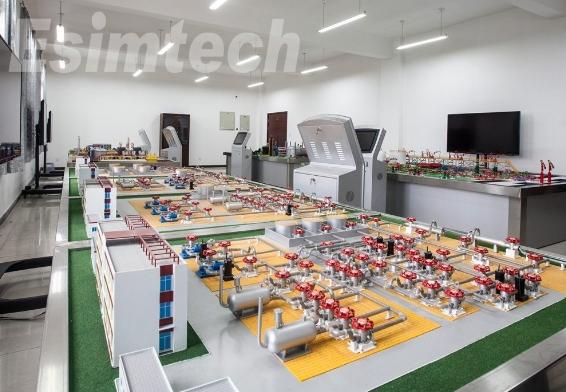Black Gold Boom or Bust? Simulating the Future of Oil & Gas Production

The oil and gas industry stands at a crossroads, facing a future shrouded in uncertainty. Will it be a black gold boom, fueled by new discoveries and technological advancements, or a bust, driven by the rise of renewables and environmental concerns? The answer, perhaps, lies not in the depths of the earth, but in the intricate world of oil and gas production simulators.
These sophisticated tools are more than just fancy video games. They are powerful platforms built on cutting-edge data and AI, allowing companies to recreate the complexities of oil and gas production in a virtual world. Here's how they can help navigate the boom or bust:
Simulating the Boom
1. Unveiling Hidden Treasures: Virtual rigs can explore uncharted territories, assessing the viability of unconventional resources like shale oil and gas. Imagine venturing into unexplored formations, analyzing seismic data, and predicting the potential of a hidden reservoir – all within the safe confines of the simulator. This can unlock new reserves, extending the lifespan of the black gold era.
2. Optimizing Every Drop: Simulating different drilling techniques and well configurations can unlock the secrets to maximizing output while minimizing environmental impact. Imagine testing innovative drilling methods, adjusting pressure gradients, and fine-tuning well completion strategies – all in real-time, with the simulator revealing the optimal path to efficient and sustainable production.
3. Innovation Playground: Emerging technologies like carbon capture and storage can be tested in the virtual world, paving the way for a more responsible future. Imagine injecting captured carbon dioxide deep underground, simulating its interaction with rock formations, and ensuring its safe and permanent storage – all before breaking ground on a real project. This allows companies to embrace innovation with confidence, knowing the potential risks and rewards beforehand.
Simulating the Bust
Preparing for the Shift
As the world embraces renewable energy sources, oil and gas companies can use simulations to plan for the inevitable transition. Imagine modeling different scenarios of declining demand, testing diversification strategies, and even exploring ventures into renewable energy production – all within the controlled environment of the simulator. This allows companies to adapt with agility, safeguarding their future even in a changing landscape.
Mitigating Risks
Accidents, spills, and environmental hazards are realities in the oil and gas industry. But simulations can help companies develop robust mitigation strategies. Imagine simulating worst-case scenarios, testing emergency response protocols, and optimizing safety measures – all before a real incident occurs. This proactive approach can prevent disasters and protect workers and the environment.
Building Resilience
Volatile oil prices and economic downturns can cripple even the most well-established companies. But simulations can help prepare for these challenges. Imagine modeling different economic scenarios, testing cost-cutting measures, and optimizing resource allocation – all within the simulator. This allows companies to build financial and operational resilience, weathering any storm that may come their way.
The Power of Simulation
Oil and gas production simulators are not just tools for predicting the future; they are instruments for shaping it. By de-risking decision-making, accelerating innovation, and fostering collaboration, they can empower companies to navigate the boom or bust with foresight and agility.
Remember, the future is not written in stone. By embracing the power of simulation, the oil and gas industry can not only secure its own future but also contribute to a more sustainable and equitable world for all. So, let's explore the uncharted territories of the virtual world, unlock the secrets of the black gold, and build a future where the boom and bust become a story of resilience, innovation, and responsible stewardship of our planet's resources.
- Art
- Causes
- Crafts
- Dance
- Drinks
- Film
- Fitness
- Food
- Jogos
- Gardening
- Health
- Início
- Literature
- Music
- Networking
- Outro
- Party
- Religion
- Shopping
- Sports
- Theater
- Wellness


